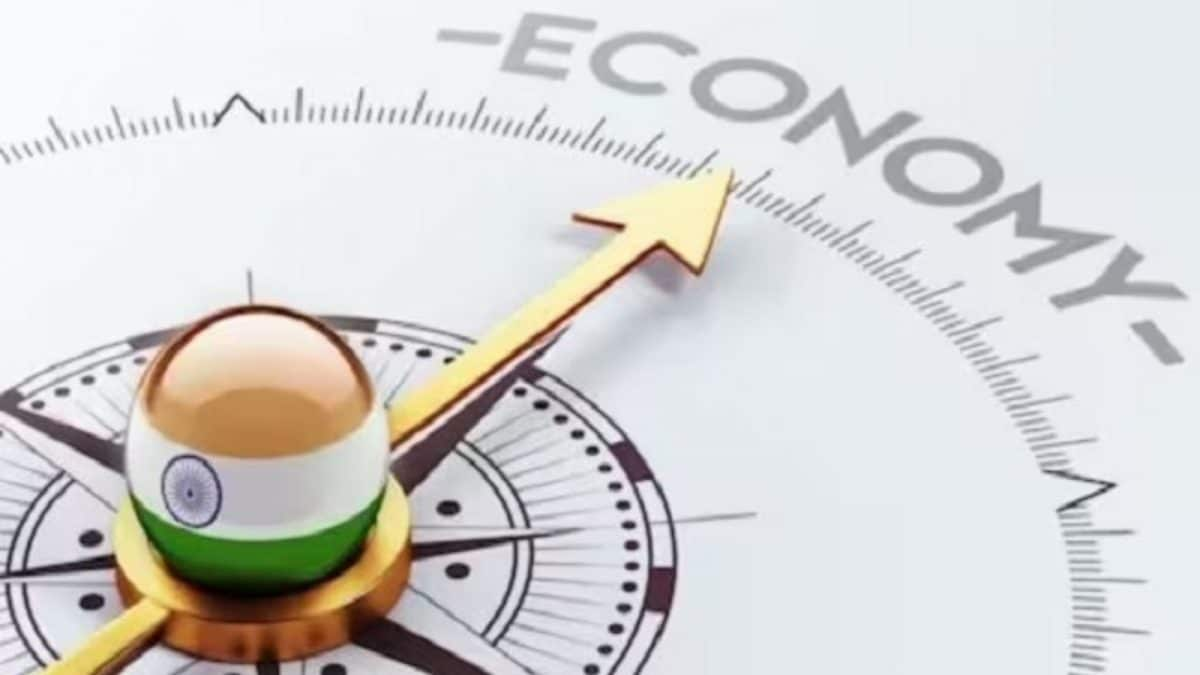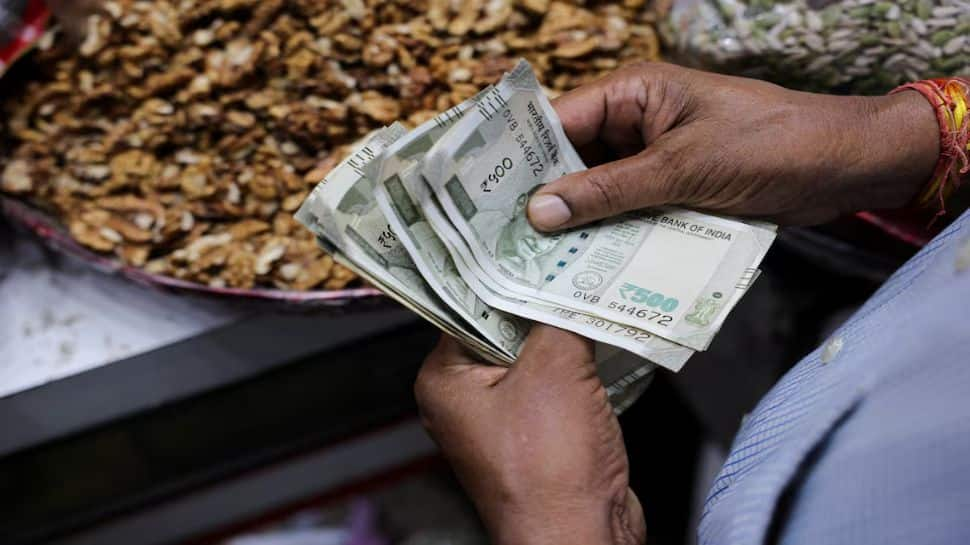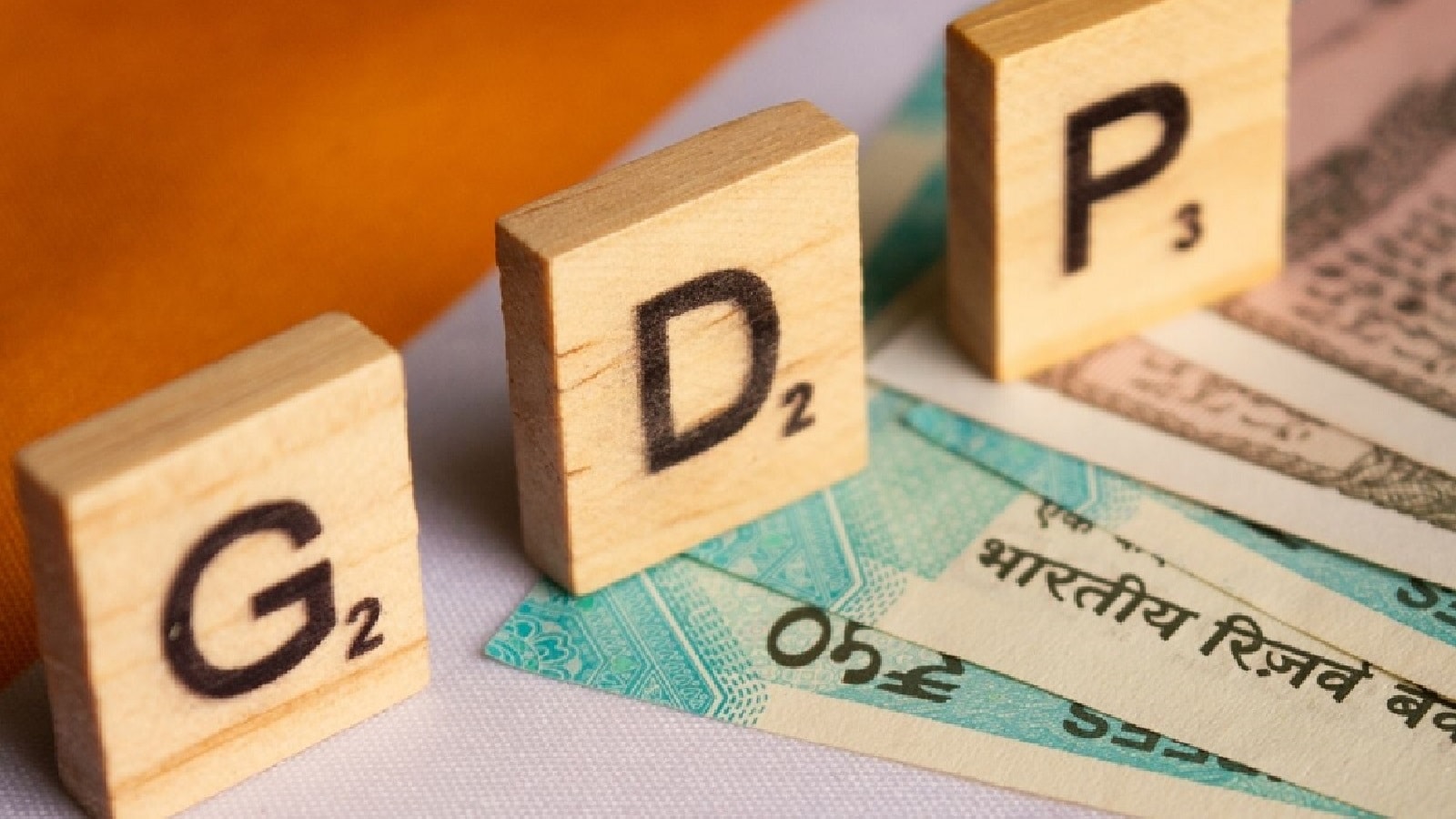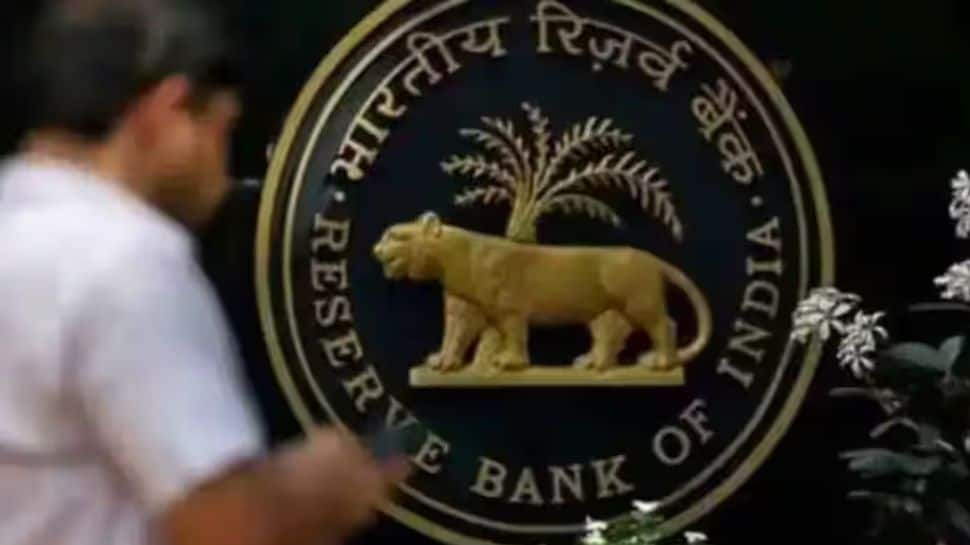Business
‘Indian Economy Continues To Gain Momentum Despite Uncertain Global Outlook’: FinMin Report

Last Updated:
‘Demand conditions across rural and urban India strengthened with…GST reforms and the festive season,’ the finance ministry says in latest Monthly Economic Review.
The finance ministry said the combination of macroeconomic stability, regulatory reforms, and ongoing structural initiatives is expected to have a positive multiplier effect on economic activity.
Despite global economic uncertainties and trade disruptions, India’s economy has continued to gather strength, supported by robust domestic demand, strong manufacturing and services activity, and contained inflation, according to the finance ministry’s Monthly Economic Review for September 2025 released on October 27.
“Amidst…uncertain global outlook, India’s economy continues to gain momentum. Demand conditions across rural and urban India strengthened with the implementation of the GST reforms and the festive season, coinciding with industry reports signalling robust growth in sales, particularly in sectors such as automobiles. On the supply side, the manufacturing and services sectors expanded healthily. Taking into account the higher-than-anticipated growth in Q1 FY26 and steady upward trends visible in Q2 FY26, India’s growth forecasts for FY26 have been upgraded,” the finance ministry said in the report.
The report noted that economic activity worldwide has remained steady over the past few months, despite adverse trade policy disruptions. As a result, global economic growth this year is now expected to fare better than initially feared. This is reflected in the International Monetary Fund’s (IMF) upward revision of the global growth forecast for 2025 to 3.2 per cent in October 2025, compared with 3 per cent in July 2025 and 2.8 per cent in April 2025. Several transitory factors, such as a lower effective tariff rate in the US and frontloading of trade, have contributed to propping up growth. However, this resilience masks underlying structural weaknesses which are coming to the fore, leaving projections for global growth in 2026 broadly unchanged since July 2025.
The IMF now expects India’s real GDP to grow 6.6% in FY26, while the Reserve Bank of India’s (RBI) Monetary Policy Committee (MPC) projects an even higher 6.8% growth, reflecting upgrades of 20 and 30 basis points, respectively.
Inflation Under Control, Price Stability Expected to Continue
The report highlighted that inflation remains well within control, aided by continued deflation in food categories. Retail headline inflation eased to 1.54% in September 2025, bringing the Q2 FY26 average to 1.7%.
Core inflation (excluding food and fuel) stood at 4.6% in September, with prices of non-food items staying stable. The ministry said, barring any adverse weather events or supply chain shocks, price stability is likely to prevail.
The RBI expects inflation to average 1.8% in Q3 FY26, with a slight uptick in Q4 FY26 and Q1 FY27 as base effects fade.
RBI Measures Support Liquidity and Credit Flow
The finance ministry credited the RBI’s liquidity management for ensuring adequate credit availability to support growth. The transmission of monetary policy into money and credit markets remains effective, reflecting the central bank’s calibrated approach.
It added that the RBI’s recent regulatory and development policies demonstrate a “balanced response” to evolving macroeconomic conditions — combining prudence with reforms aimed at strengthening banks, boosting credit flow, simplifying forex management, and internationalising the Indian Rupee.
External Trade Remains Resilient
India’s external sector has also shown resilience despite a volatile global trade environment. Total exports of goods and services grew 4.4% year-on-year in the first half of FY26 to reach USD 413.3 billion.
While merchandise exports rose 3%, services exports expanded 6.1% during the same period. Core merchandise exports, excluding petroleum and gems & jewellery, grew a strong 7.5%, underscoring the competitiveness of India’s manufacturing base.
Labour Market, Reforms, and Innovation Drive Growth
The government’s emphasis on skill development and job creation has helped stabilise the labour market in H1 FY26, with rising labour force participation and employment growth in both industry and services.
The introduction of GST 2.0 is expected to further stimulate consumption and investment, creating a multiplier effect on employment and demand.
The report also highlighted the government’s focus on research and innovation to boost global competitiveness. The Promotion of Research & Innovation in Pharma-MedTech Sector (PRIP) scheme, launched by the Department of Pharmaceuticals, will provide around ₹11,000 crore in support for R&D projects. The initiative aims to transform India’s Pharma-MedTech sector into a globally competitive, innovation-driven ecosystem by funding early-stage research and promoting flexible collaborations focused on public health priorities.
Outlook: Growth Momentum to Sustain
The finance ministry said the combination of macroeconomic stability, regulatory reforms, and ongoing structural initiatives is expected to have a positive multiplier effect on economic activity. These efforts, it said, will support domestic demand, enhance resilience, and help sustain India’s growth momentum despite a challenging global environment.
“Looking ahead, the lower GST rate is expected to support a positive demand outlook by reducing the tax burden on consumers and businesses, stimulating consumption and investment across sectors and boosting employment generation in the economy. Moreover, a strong performance in the industries and services sector, along with a stable labour market, will further enhance domestic demand. Nevertheless, global uncertainties warrant caution and will continue to affect external demand, presenting downside risks to the growth outlook,” the ministry said.
The implementation of various growth-enhancing structural reforms and government initiatives, including GST 2.0, is expected to mitigate some of the negative impacts of these external challenges, it added.

Haris is Deputy News Editor (Business) at news18.com. He writes on various issues related to personal finance, markets, economy and companies. Having over a decade of experience in financial journalism, Haris h…Read More
Haris is Deputy News Editor (Business) at news18.com. He writes on various issues related to personal finance, markets, economy and companies. Having over a decade of experience in financial journalism, Haris h… Read More
October 27, 2025, 13:22 IST
Read More
Business
Startup backed by Altman, JPMorgan announces capital lending partnership with Amazon

Slope, a lending startup that uses artificial intelligence to vet businesses, is partnering with Amazon starting Tuesday to provide a reusable line of credit to Amazon sellers, backed by a JPMorgan Chase credit facility, the company told CNBC exclusively.
The new relationship means eligible U.S. Amazon vendors can apply for and access capital directly through their Amazon Seller accounts with real-time approvals.
Slope was co-founded by CEO Lawrence Lin Murata, who said said he saw the ups and downs of running a small business while he was growing up in São Paulo.
Lin Murata helped his parents at their family’s toy shop, which they’ve been running for more than three decades. As he gained more insight into the finances of the business, he said he realized that cash flow was a large pain point for his parents and other small businesses.
That led him to start Slope, an AI-powered lending platform backed by OpenAI CEO Sam Altman and JPMorgan Chase, with co-founder Alice Deng.
“Leveraging AI, we’re able to underwrite these businesses, and we’re able to handle all the complexity of assessing the risk for a business,” Lin Murata said. “At the same time, [we’re] providing a very easy, real-time experience to them.”
The lines of credit will start at an 8.99% APR, according to Slope, and require vendors to be in business for at least one year with more than $100,000 in annual revenue. Once approved, Amazon sellers can draw from the line as needed and choose a term ranging from three months to a year to align repayment with their inventory cycle. Scope did not disclose the financial aspects of its deal with Amazon.
“Most people don’t realize that sellers, independent sellers, are kind of the backbone of Amazon and e-commerce in general,” Deng told CNBC. “More than 60% of Amazon’s sales are driven by independent sellers.”
Deng said Slope is filling a gap with the new partnership. Currently, Amazon sellers can use some third parties to access capital, though Deng said those initiatives are more focused on smaller sellers, while Slope is focused on mature sellers, some of whom reach hundreds of millions of dollars in revenue and require bank-grade financing.
Deng said when Amazon did its own lending around four years ago, the total addressable market was between $1 billion and $2 billion. With Slope taking over the program, the company expects that number to grow.
“We’re excited about our work with Slope, which expands the financing tools available to Amazon selling partners,” an Amazon spokesperson told CNBC. “Whether they are just starting out or looking to grow, access to sufficient capital is a critical need for small business owners, and we’re always evaluating new ways to empower sellers to thrive in the Amazon store.”
With Slope’s new deal, sellers can take a few minutes directly on Amazon Seller Central to apply for capital and get approved almost instantly, using proprietary Amazon performance data and Slope’s in-house large language model, Lin Murata said.
“That is one of the reasons why we’re able to give a more compelling offer than if you were outside of the Amazon dashboard,” Lin Murata said. “And then we give real-time decisions, so we analyze Amazon performance, data, and cash flow in real time.”
It’s a process that the Slope co-founders said is easier, faster and more integrated than having to apply for loans at banks as a small business. With the granular data that Amazon provides, like a breakdown of sales by product, they said the AI model is able to make a more informed decision on financing than a bank would based on overall financial documents.
With the new deal, Amazon joins a growing slate of Slope’s customers, which already include Samsung, Alibaba, Ikea and more.
Deng and Lin Murata said the company has trialed the new Amazon integration, and though the trial has been live for just a few weeks, the pair said it’s seen significant demand and applications growing 300% week over week.
“Going back to the initial inspiration of my parents, I think we want to be the credit intelligence layer for these businesses,” Lin Murata said. “Ultimately, what we’re really doing is helping these businesses grow by giving them fair, affordable, fast and very easy access to different forms of financing.”
Business
Wessex Water to pay £11m towards wastewater upgrades after Ofwat investigation

Wessex Water will pay £11 million toward upgrades after the industry watchdog found it failed to properly manage its wastewater network.
The water company, which serves around 2.9 million customers in the South West, was made to pay the enforcement package by regulator Ofwat.
By agreeing to the extra investment in its network, the firm avoids having to pay a fine.
It will be paid for by shareholders and not through customer bills, the watchdog confirmed.
Wessex Water failed to operate, maintain and upgrade its network to ensure it could cope with flows of sewage and wastewater, Ofwat found in its investigation.
The investment package will go towards a series of upgrades, including helping private landowners to seal their sewer pipes to avoid unnecessary groundwater reaching its network, and bringing forward investment into reducing spills at specific storm overflow areas.
Money will also be spent on installing monitoring equipment and helping customers to sustainably manage rainwater at their properties.
Ofwat said Wessex was the sixth case it had completed in its wider wastewater investigation, which has resulted in £250 million in fines and enforcement packages.
Lynn Parker, senior director for enforcement at Ofwat, said: “These cases are a crucial part of holding water companies to account and driving the transformation of the water sector that the public wants to see.”
Wessex Water had said it “regrets the impact our wastewater performance has had on customers and the environment”.
The company said the investment package “will tackle the problem directly” and that it was planning to invest £300 million in its sewerage infrastructure by 2030.
Business
India Inflation To Remain Benign In FY27, Another Rate Cut Only If Growth Requires It: Report

New Delhi: Well stocked granaries, low oil prices and longer-lasting drivers of core disinflation are likely to keep India inflation benign in FY27 as well, according to a new report.
HSBC Global Investment Research said in its report that “we do not forecast more RBI repo rate cuts, but the risks, if any, are of more easing, if growth disappoints”.
November CPI inflation came in at 0.7 per cent (on-year), in line with market expectation. Despite a sequential uptick of 0.4 per cent (on-month), the annual prints remained depressed due to base effect.
Excluding gold, headline CPI remained in deflation (-0.1 per cent in November compared to -0.6 per cent previously).
“Deflation in food prices continued for a third month in annual terms. Sequentially, food prices rose 0.5 per cent on-month after two months of contraction. Vegetables prices picked up after falling for two straight months along with a rise in the prices of protein items like egg, meat and fish,” said the report.
“Gold prices kept core inflation elevated. With a weight of 1.1 per cent in the CPI basket and prices up 59 per cent in November, gold alone explains c63bp of CPI inflation. Our preferred definition of core (excluding food, energy, housing and gold) had been steady at 3.2 per cent y-o-y in 3Q25, and has now fallen to 2.5 per cent in November,” said the report.
Following a sharp fall in October, November goods inflation remained benign.
According to the report, strong cereal production, well-stocked granaries, and winter disinflation are likely to help keep a lid on food inflation over the near future.
“And it is not just easing food prices. The high base of last year is likely to keep CPI inflation soft for the next few months. Global oil prices, too, have been low, and cheaper imports from China will likely keep core inflation soft for a prolonged period,” it noted.
The RBI has lowered H1 FY27 inflation forecast by 50 bp (4.5 per cent previously to 4 per cent now).
“However our forecasts are 50 bp lower than the RBI’s (at 3.5 per cent). If we are correct, and the RBI eventually makes further downward adjustment to inflation, there would be space to ease further, if growth requires it,” said the report.
-

 Politics1 week ago
Politics1 week agoThailand launches air strikes against Cambodian military: army
-

 Politics1 week ago
Politics1 week agoZelenskiy says Ukraine’s peace talks with US constructive but not easy
-

 Politics5 days ago
Politics5 days agoTrump launches gold card programme for expedited visas with a $1m price tag
-

 Fashion1 week ago
Fashion1 week agoGermany’s LuxExperience appoints Francis Belin as new CEO of Mytheresa
-

 Tech7 days ago
Tech7 days agoJennifer Lewis ScD ’91: “Can we make tissues that are made from you, for you?”
-

 Business6 days ago
Business6 days agoRivian turns to AI, autonomy to woo investors as EV sales stall
-

 Entertainment1 week ago
Entertainment1 week agoToo big to fail? IndiGo crisis exposes risks in Indian aviation
-

 Sports5 days ago
Sports5 days agoPolice detain Michigan head football coach Sherrone Moore after firing, salacious details emerge: report










